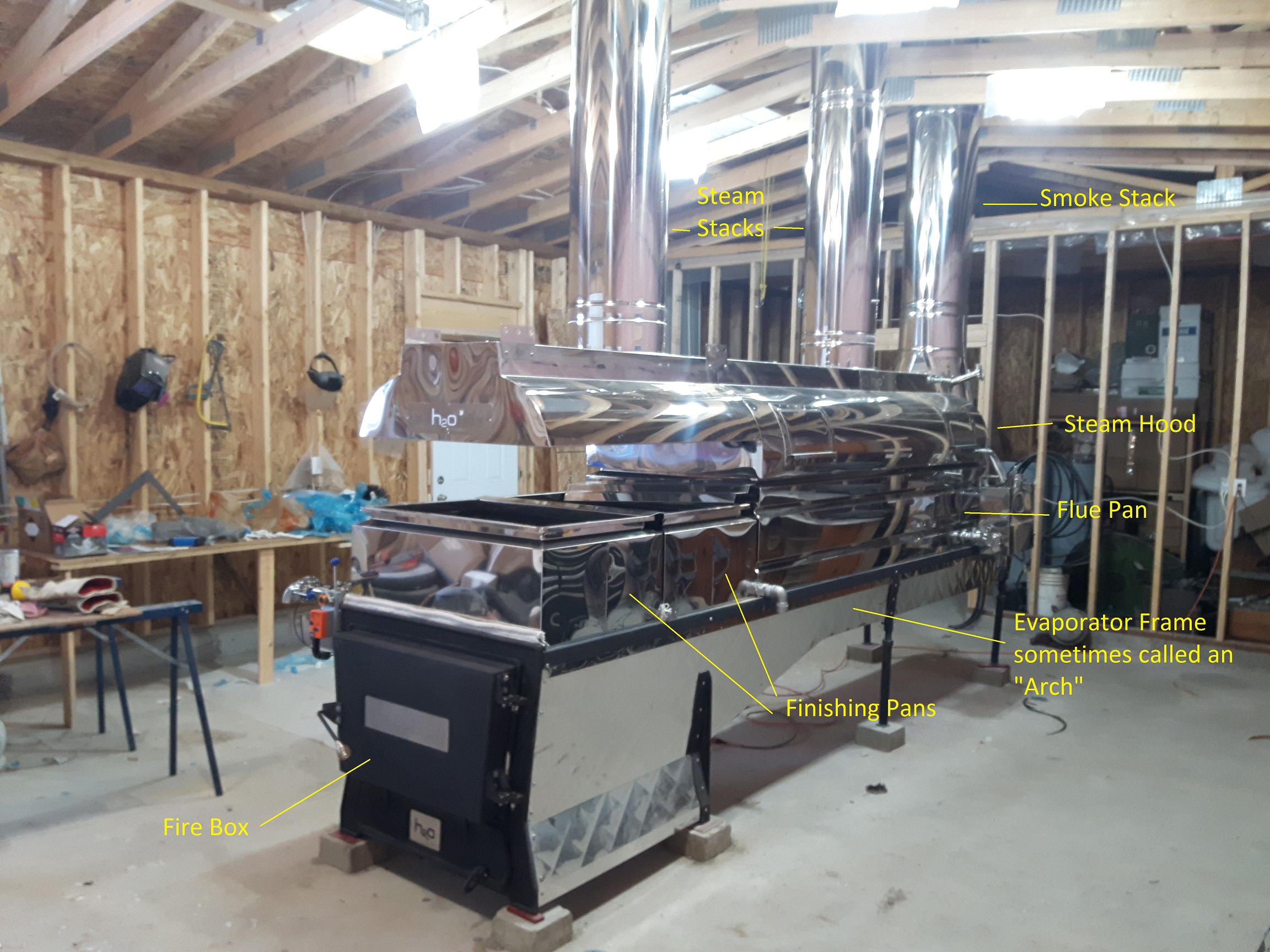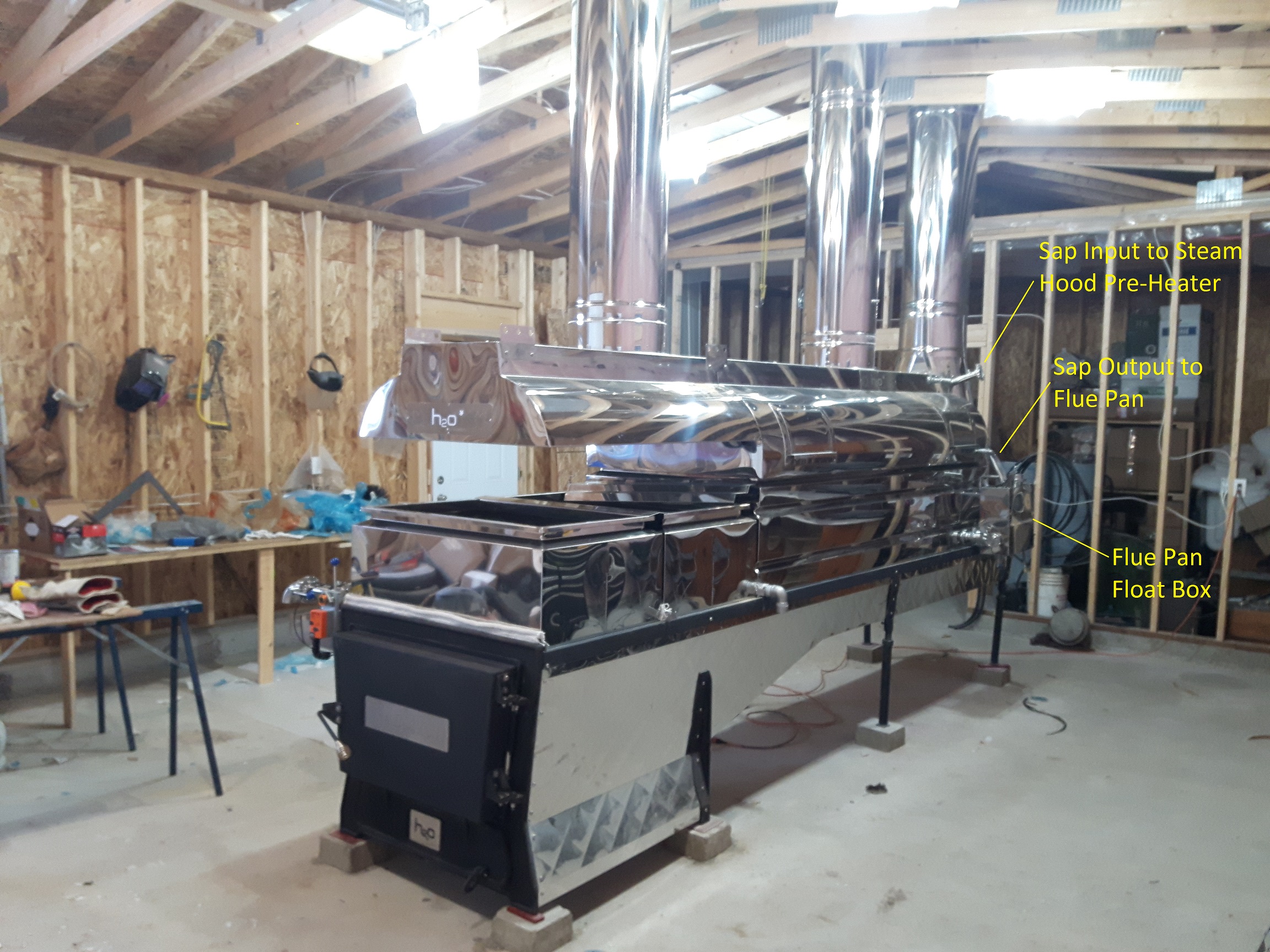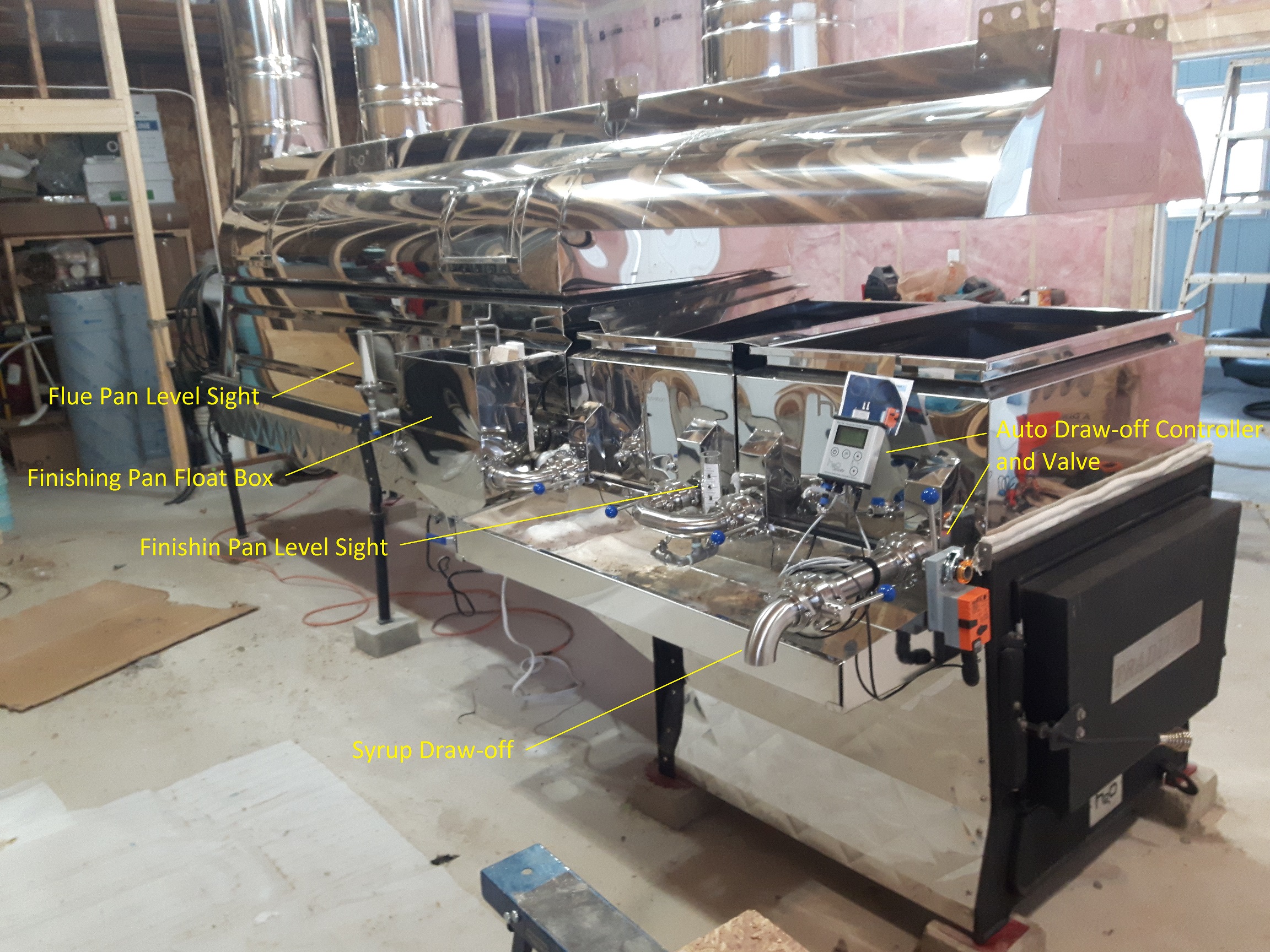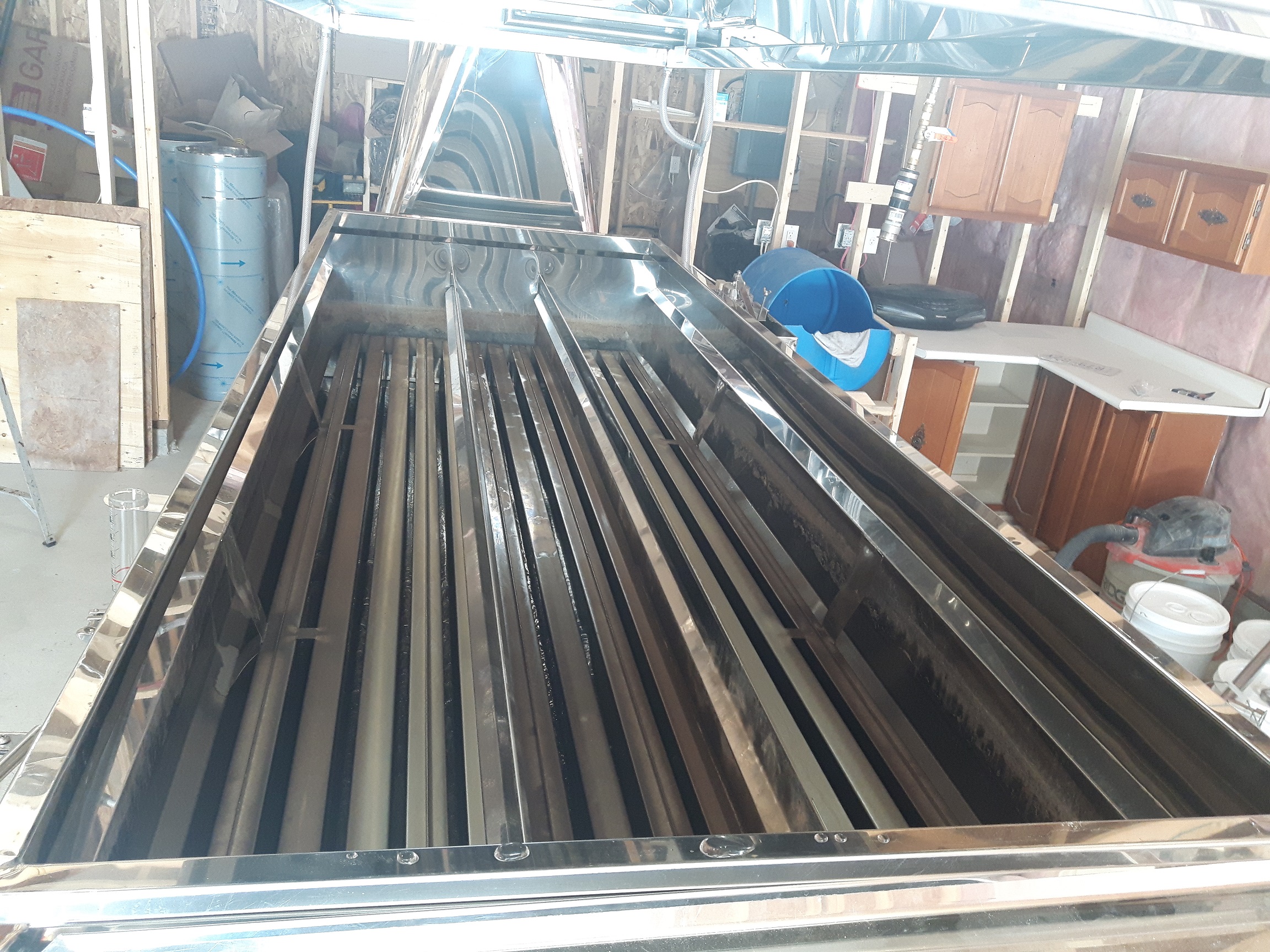Maple syrup is made by removing the water from maple sap to concentrate it, as well as cooking the sugars in the sap to bring out its flavour and aroma.
While there are some ways of speeding up this process (using a reverse osmosis machine to mechanically remove the water, or by manually discarding ice from frozen sap, for example), every Maple Syrup producer, large and small, uses some form of an Evaporator to accomplish this.
An evaporator can be as simple as a pot on a stove or campfire for backyard maple sugar making, or huge, expensive, and elaborate custom-made equipment for very large producers. It uses heat to boil the sap which removes water from the sap in the form of steam. As water is removed from the sap, the natural sugars become more and more concentrated, and the sugars caramelize, becoming darker and more flavourful. When so much water has been removed that the sugar is now at about 66% (versus 2 to 3% in the raw sap), it is now Maple Syrup.
We've got a mid-sized, wood-fired, system that will be able to grow with us and be able to support a few thousand taps - Let's take a look at how it works.
Here are some photos of the evaporator with the major parts labelled. I'll use the same names in the description below to make it easy to identify the part of the system that I'm referring to.



The raw sap is gravity-fed into the upper-rear of the evaporator in the Steam Hood pre-heater. The pre-heater is a series of tubes inside the steam hood that uses the heat of the rising steam to bring the temperature of the sap up close to the boiling point before it ever enters the main part of the evaporator. This helps the evaporator maintain a nice, steady, boil.
The pre-heated sap then passes through the Flue Pan float box, which is used to regulate the sap level in the flue-pan so it doesn't overflow, and into the Flue Pan. We use the Flue Pan Level Sight to keep an eye on the sap level to make sure there is always sufficient sap in the pan so that the pan doesn't get overheated and ruined.
The Flue Pan on our evaporator has three sections and a series of channels built such that the heat from the wood fire can get right up into the flue pan and transfer as much of its heat as possible into the sap before exiting the evaporator via the smoke stack. The sap migrates the length of the flue pan three times, becoming more and more concentrated, before it finally exits the flue pan and into the Finishing Pans via the Finishing Pan float box.
Here's a photo of the Flue Pan (with the steam hood lifted up off it for cleaning access) so you can get an idea of the channels that I'm referring to:

The Finishing Pan float box regulates the sap levels in the finishing pans so they don't overflow. Here, we similarly use the Finishing Pan Level Sight to keep an eye on the sap level to make sure there is always sufficient sap in the finishing pans so that these pans stay safe as well.
Once in the first finishing pan (the one closer to Flue Pan), the boiling intensifies since it is now closer to the wood fire. The sap gradually moves through the two chambers of the first finishing pan, getting more and more concentrated, and into the second finishing pan right at the front of the evaporator and directly over the fire. This is where the most intense boiling occurs.
The second finishing pan also has two chambers that the sap flows through. Once in the final chamber at the very front of the evaporator, the now very concentrated sap is further concentrated until it can officially be called Maple Syrup. It is then drawn off the evaporator and made ready for filtering and bottling. We employ a device that monitors the barometric pressure as well as the temperature of the final chamber of the finishing pans and opens a motorized valve automatically when the maple syrup is ready. We then use a refractometer and hydrotherm to independently verify that the syrup is at the correct concentration.
And that's basically how it works!
To summarize, the sap enters the rear of the evaporator, migrates towards the front while boiling and becoming more concentrated, and is drawn off at the very front when it has been transformed, as if by magic, into Maple Syrup!
Here's a short video showing the boiling in progress:
